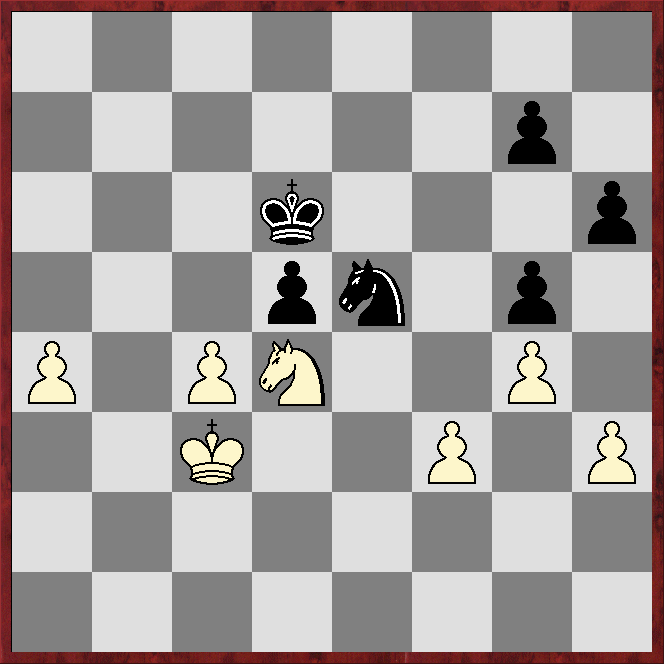*****
*****
*****
*****
*****
*****
*****
Clearly White cannot let Black win the c pawn, so I played 38.cxd5?, but this lets Black draw, the game continuing 38...Kxd5 39.Nf5 Nxf3 40.Nxg7 Ng1 41.Nf5 Nxg3 42.Kb4!? Kc6 43.a5 Nf4 44.Kc4 h5!?, when the position is so drawn that Black went on to reach a position in which he had 10 possible moves, only one of which lost.
Yet in the diagram White has two winning moves.
A) 38.Nf5+, which, after 38...Kc5 39.cxd5 Kxd5 reaches the same position as arises in the game after 39.Nf5, except now it is White rather than Black to move, and this extra tempo makes the position trivially winning (White is up the equivalent of about a rook, or even more, according to Stockfish17 and Dragon1).
B) 38.Nb5+!?, which, while not quite as emphatic as 38.Nf5+, still wins, as I show in my notes to the game.
LESSON: a single tempo in an ending can make all the difference, and great care must be taken to avoid squandering one, and to not miss an opportunity to gain one.
LESSON: a single tempo in an ending can make all the difference, and great care must be taken to avoid squandering one, and to not miss an opportunity to gain one.

No comments:
Post a Comment